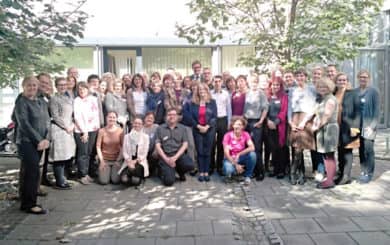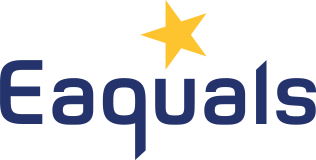Eaquals Event Speaker Report: ECML Workshop on Language Teacher Competencies
1. Brief Overview of Project
The European Centre for Modern Languages of the Council of Europe are currently engaged in a project entitled Towards a Common European Framework for Language Teachers (2016-2019) (Vers un Cadre européen commun pour les enseignants de langues (2016-2019)). This project is being undertaken by a team including Anna Schroeder-Sura (Universität Rostock, Institut für Romanistik), Francis Goullier (Ministère de l’Education Nationale), Project Coordinator Lukas Bleichenbacher (Swiss profiles consortium / Leading house Pädagogische Hochschule des Kantons St.Gallen) and Richard Rossner (EAQUALS).
The project has considered 50 different competency frameworks for teachers including the EAQUALS TD Framework, the Cambridge English Teaching Framework, the British Council Continuing Professional Development (CPD) Framework for teachers and The European Profiling Grid as part of their research.
This project is aimed primarily at Teacher-Educators, and they are seen as the ‘first’ if not primary beneficiaries of it:
“Whilst the direct beneficiaries will be teacher educators and those developing teacher education programmes, and in turn, the teacher-learner of these programmes, the ultimate beneficiaries will be learners, because teachers will be better equipped to respond to individual learner needs”[1]
The envisaged outputs of this project are clearly stated on the ECML website. They include:
1. The creation of a user guide for existing competency frameworks.
2. Practical examples of how the existing tools are currently used.
3. An inventory of key language teaching competences which may include language-related competences relevant to subject teachers.
4. Further development, piloting and empirical validation of existing tools so as to adapt them for broader use within Europe.
5. Assessing the need for, and practicality of, a Common European Framework of Reference for Language Teachers.
Alongside these outputs, the stated outcomes of the project include:
1. Better quality language education which meets the needs of all learners as a result of improved initial and in-service language teacher education, and autonomous professional development for language teachers and teachers of all subjects.
2. Greater international transparency and coherence in language teacher education that takes into account the diversity of educational contexts across member states.
3. A deeper understanding and broader awareness of the role all teachers play in developing the linguistic repertoire of their learners.
4. Improved collaboration among teachers working with or through different languages in order to promote and support plurilingualism.
5. Dialogue and greater agreement on the key role that language teachers play in education[2]
From 2016 to 2018, a huge amount of work has been done on the project and a framework has been created which lays out the basic tenants and focus of a potential Common European Framework of Reference for Language Teachers (CEFRLT). The process has included:
1. An analysis and evaluation of the current frameworks in existence
2. Case studies of how some of the instruments are used in practice
3. The piloting and further development of selected instruments
4. An enquiry into the relevant key competencies and attributes for teachers
5. A feasibility study for a potential CEFRLT
On October 3rd and 4th 2018 at the ECML in Graz, a workshop was held at which the project was presented in its current form and feedback on certain areas and the direction of the project was solicited.

2. Aims of Meeting
The aim of the meeting for the project as a whole was for the project team to be able to get feedback on a number of key areas.
a. Is this Framework needed?
b. Who should this Framework be written for?
c. What key areas should the framework focus on?
d. How could this framework be used?
e. Should this framework be for Language Teachers or should there be wider remit?
f. Is the wording used in some of the competencies appropriate?
g. Which wording or formatting would make a more appropriate ‘House Style’?
On the ECML website they cite two particular outcomes for the participants in the workshop, namely:
a. First-hand documentation/ information on the user guide to teacher competence instruments with practice examples and a draft inventory for language teacher competences, ready for use and discussion in the participants’ own professional contexts.
b. Knowledge of and opportunity to influence plans for a possible future Common European Framework for language teachers and for the role of language in education, and to share views on the future of the profession[3]
3. General Structure
The structure of the workshop took the form of one day of mostly input sessions designed to familiarise ourselves with the key motivations behind the project, the areas of focus for the project, and some of the areas in which feedback would be welcomed.
These input sessions included presentations entitled ‘An Overview of Teacher Competencies for Languages in Education’ and ‘Teacher Competence Frameworks-A Brief Introduction’.
The second day of the project afforded the participants the opportunity to investigate the areas of competency being covered by the project, work in groups, and discuss and give more concrete feedback on particular aspects of interest.
During these breakout sessions, participants were given the opportunity to view the ‘Dimensions’ (Categories of competence) and some of the descriptors themselves which have been created by the project team.
1. Dimension 1: Professional Values and Principles
a. For example ‘Principles related to cooperation with other stakeholders and institutions’
2. Dimension 2: The Subjects
a. For example ‘Competences for communication (language competences, intercultural competences, non-linguistic means of communication)
3. Dimension 3: Pedagogy
a. For example ‘Conducting teaching’
4. Dimension 4: Cooperation with Stakeholders
a. For example ‘Cooperating with other teachers, staff members and stakeholders’
5. Dimension 5: Teacher Education and Lifelong Professional Development
a. For example ‘Development of one’s pedagogic competences’
The contents of these Dimensions was analysed by different groups in the workshop and comprehensive presentations and debates were conducted on each one.
4. Key Outcomes
There were a number of crucial areas under debate throughout the 2 days.
a. Who is this Framework intended for?
The didn’t seem to be a clear consensus within the project team as to who was the intended audience for the descriptors. This carried forward into the workshop with some attendees insisting it should be written for teachers in order to ensure that they have agency in their own development, and others insisting that this type of document should be aimed at teacher educators. There was no definitive conclusion to this debate but it was certainly a valuable one to have.
b. How will this Framework be used?
Concern was expressed regarding the differences between the intentions behind the creation of such a document as a CEFRLT and the practical implications for teachers on the ground. While this documents is being created with the best of intentions, there is a fear, and it was discussed several times throughout the workshop, that a set of descriptors such as this will be used as a series of requirements for teachers, rather than an inventory of guideline descriptors.
c. The scope of the project
There was a lot of discussion surrounding the notion that this framework should attempt to include all teachers rather than simply language teachers. While it was agreed that this was indeed a noble end, it should not be the remit of this particular project, and certainly the consultation process should move far beyond its current state if that remit is to be attempted.
d. The contents of each dimension
There were whole areas of each dimension which participants in the workshop agreed were either inappropriate, misplaced, or in need or revision. These included a focus on ‘Wellbeing’ in Dimension 5, ‘Interacting with Parents’ in Dimension 4, and ‘Subject matter competence’ in Dimension 2.
[1] https://www.ecml.at/ECML-Programme/Programme2016-2019/TowardsaCommonEuropeanFrameworkofReferenceforLanguageTeachers/tabid/1850/Default.aspx
[2] https://www.ecml.at/ECML-Programme/Programme2016-2019/TowardsaCommonEuropeanFrameworkofReferenceforLanguageTeachers/tabid/1850/Default.aspx
[3] https://www.ecml.at/ECML-Programme/Programme2016-2019/TowardsaCommonEuropeanFrameworkofReferenceforLanguageTeachers/CEFR-participate/tabid/1877/language/en-EN/Default.aspx



